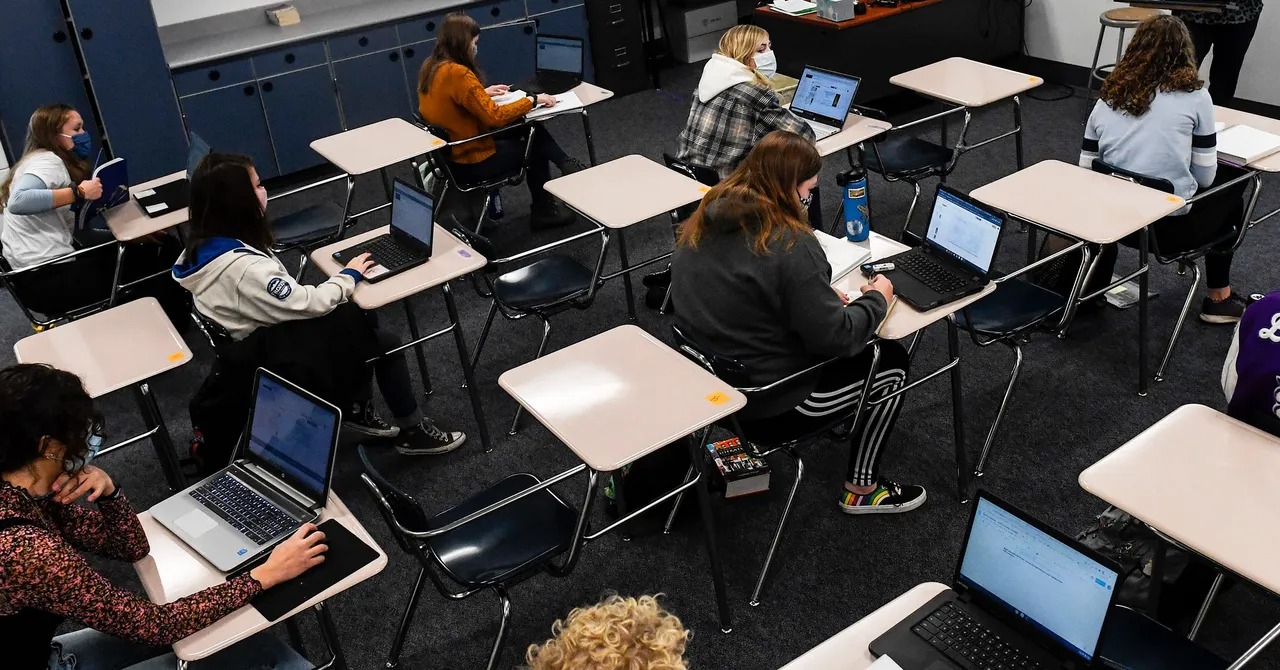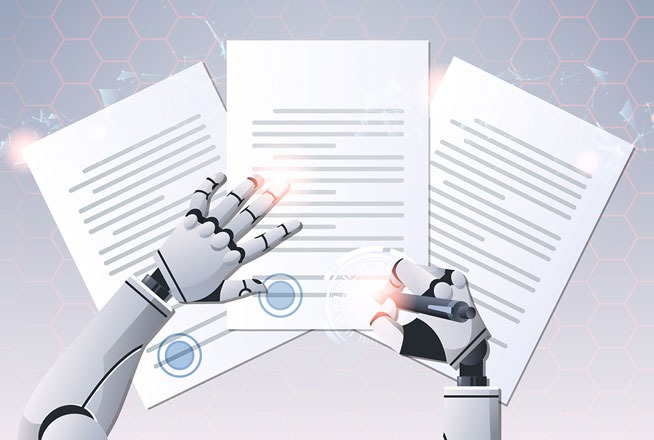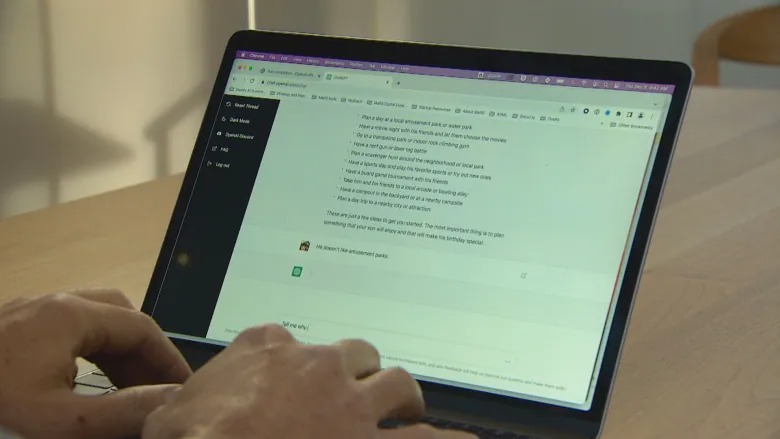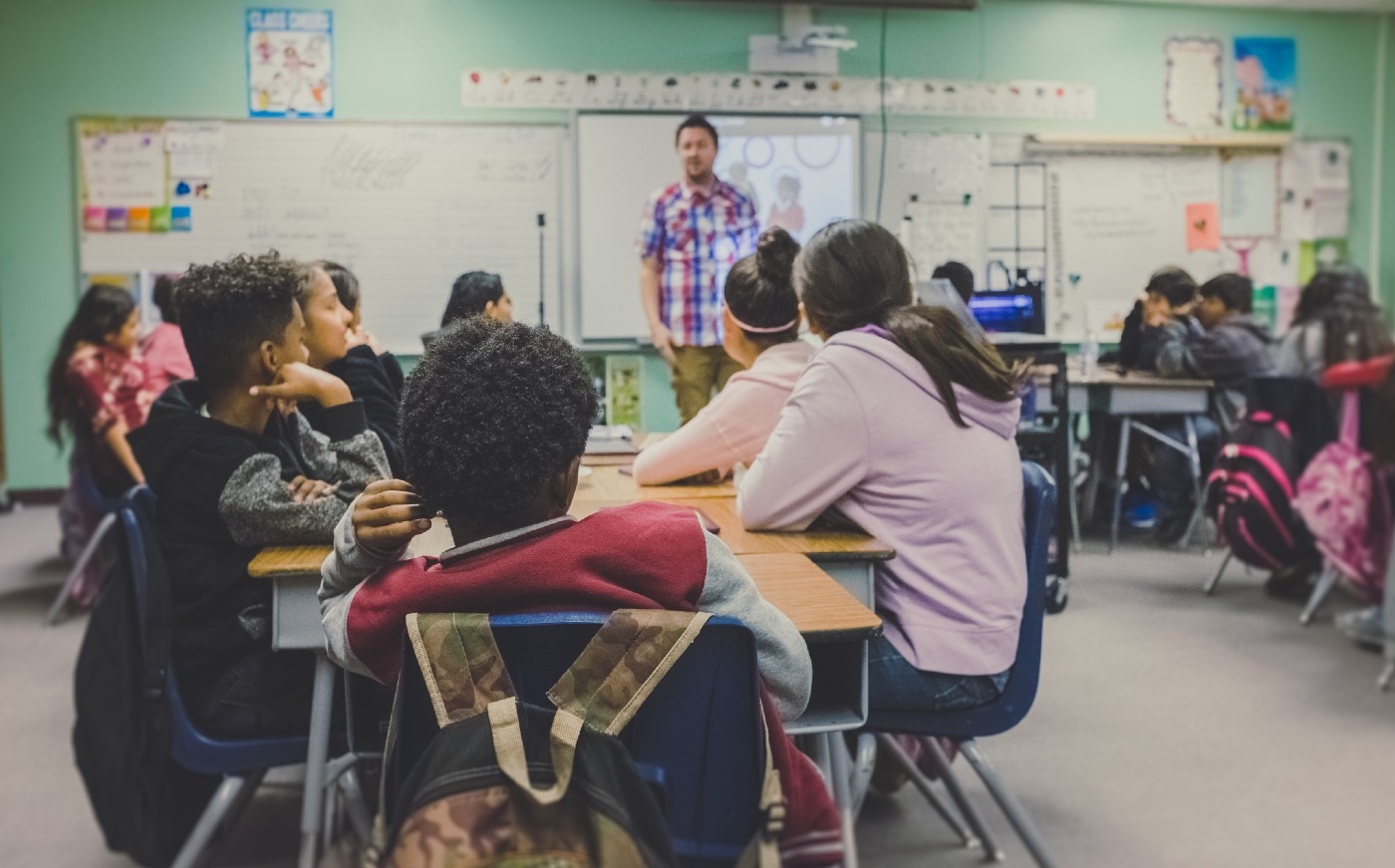‘Turn enemies into friends’: How teachers are bringing ChatGPT into schools
- Tram Ho
Kelly Gibson, an English teacher, first came into contact with ChatGPT last December, and her concerns quickly began to surface. While the internet is amused by this chatbot’s elaborate and elaborate answers, many educators including Gibson are less interested.
Because if someone can ask ChatGPT to “write 300 words about the meaning of the green light in The Great Gatsby novel” or soon it can be “500 words about the meaning of the details of the flute in The A Phu couple , what will stop the students from giving homework to this AI bot? Rumors began to swirl around a new era, where cheating was rampant and even the death knell for essays, or education itself.
“I thought, ‘Oh my god, this is exactly what I teach,'” Gibson said.

Many teachers are worried about controlling cheating when ChatGPT exists. Wired photo
But amid confusion, some enterprising teachers see ChatGPT as an opportunity to redesign today’s learning, and what they invent could shape the future of the classroom. Gibson is one of them.
When the high school teacher’s initial anxiety subsided, she spent her winter break tinkering with ChatGPT and figuring out how to incorporate it into her own lessons. For example, she could ask students to create text using ChatGPT and then manually edit the text to find the chatbot’s errors or improve its writing style.
Gibson, who has been teaching for 25 years, likens chatbots to technology tools that will enhance, not replace, learning and critical thinking. “I don’t know how to do it well yet, but I want AI chatbots to become pocket calculators for writing,” she said.
Gibson’s view of ChatGPT as a teaching tool and not a scam rests on an important thesis. It’s that ChatGPT isn’t as intelligent as a human, even though it’s capable of producing human-like text. It’s a statistical machine, it can sometimes repeat or produce false information and often needs further guidance and correction to get things right.
Despite those limitations, Gibson also believes it is her responsibility to bring ChatGPT into the classrooms. This female teacher is teaching in a low-income, rural area. If only students who have access to internet-connected devices at home can experience chatbots, it could widen the so-called “digital divide” and further disadvantage those who need it. Students do not have network access. So, Gibson figured she could make ChatGPT something teachable to all her students.

ChatGPT and AI tools are changing the way traditional education and tests look. Internet photos
Other educators have also rejected the idea of ”education apocalypse” saying that ChatGPT will not be able to destroy the industry, but it shows how the education system can be disrupted.
“Another way of thinking about this is not how do you find new forms of student assessment, but what are our priorities in further education at the moment? And maybe they’re a bit problematic,” said Alex Taylor, who researches and teaches in human-computer interaction at University College London.
Taylor says the chatbot has fueled his discussions with colleagues about the future of tests and assessments. If a series of actual questions in a test can be answered by a chatbot, is that test a good learning measure? In Taylor’s view, the kinds of rote questions that chatbots can answer won’t promote the kind of learning that can help his students become better thinkers.
“I think sometimes we are going in the opposite direction. We’re trying to answer the question of how can we check if a person meets certain criteria or indicators?”, he said. “While, in fact, education should be a much more expansive idea.”
Olya Kudina used ChatGPT as a tool in her own classroom at Delft University of Technology in the Netherlands, where she teaches graduate and undergraduate courses in AI and ethics. Last December, she gave her undergraduate students a debate style exercise using ChatGPT. First, groups of students presented three arguments and two counter-arguments, supported by academic references in front of the class, without AI assistance. They then feed the task requests to ChatGPT or GPT-3 (the predecessor of ChatGPT), and then compare the chatbot’s responses with the teams’ do-it-yourself.
The students were dazzled by the speed with which the chatbot smoothly translated information into prose, until they read everything more closely. The chatbot turned out to have faked the information. When students asked it to back up an argument with citations from academic texts, it misattributed the work to the authors. And its arguments also seem roundabout and illogical. Kudina’s students eventually concluded that, contrary to concerns about cheating, copying from ChatGPT certainly wouldn’t really help them get good grades.
According to Kudina, teachers should not ban ChatGPT, nor should they embrace the technology without a doubt. She advocates figuring out how to use chatbots appropriately and finding more creative ways to collaborate with it. For example, students can use chatbots to spark new ideas or arguments. One of her students likened ChatGPT to a super powerful Google search engine. Kudina also thinks that ChatGPT will be able to encourage educators to be more creative in creating assignments, for example by designing them so that students can draw from personal experiences.

Because if someone could ask ChatGPT to write “500 words about the meaning of the details of the flute in A Phu Couple”, what would stop the students from giving homework to this AI bot?
But that’s not to say that ChatGPT is completely untroubled for the education industry. Chatbots have emerged at a time when many teachers are suffering from burnout after undergoing urgent distance learning during the pandemic. And now, another technological phenomenon is threatening to change their entire teaching methods, creating more to-dos. Besides, the implications of student privacy for ChatGPT are also unclear. OpenAI says the chatbot collects some data about users and reviews their conversations with ChatGPT. The company’s terms of service also stipulate that users must be 18 years or older, although the bot will not attempt to verify the user’s age.
And completely banning ChatGPT from classrooms, while tempting, could create a whole new set of problems. Dr. Torrey Trust at the University of Massachusetts Amherst has studied how teachers use technology to reshape learning. She points out that reverting to old forms of assessment, such as oral exams, can put students with disabilities at a disadvantage. And outright bans on AI tools could reinforce distrust.
“Students will have a harder time learning in an environment where teachers are trying to catch them cheating,” she said. “It will shift the focus from studying to just trying to get good grades.”
In January of this year, at the start of the new semester, New York City public schools banned ChatGPT on school devices and networks due to “concerns about the negative impact on student learning and concerns about the safety and accuracy of the content.”
Marilyn Ramirez, an English teacher at a high school in Washington Heights, New York City, says she was not even notified directly by New York City’s education authority.
Ramirez is the kind of teacher who will try to read inspirational speeches by famous figures to students. She is not worried about ChatGPT. This teacher said it is similar to how she allows her students who are learning English to use the Google Translate tool, but also helps them know where the technology is lacking and when to use it. use it will be most appropriate. She finds ChatGPT to be similar, with its own limitations, but it is beneficial when accompanied by a teacher’s guidance.

Experienced teachers say to see ChatGPT as a tool, not an enemy. Internet photos
When Gibson returned to school in Oregon for the New Year, her plans to introduce ChatGPT to her students were thwarted. Because her school banned this chat bot from the internal internet. So instead, she brought ChatGPT to class using the tool’s screenshots.
She also uses TikTOk to explain lesson plans in class. One of them will ask students to write an argument about the text they are reading. Then, the class will use ChatGPT together to create essays based on those thesis statements. To get around the school’s ChatGPT blockade, Gibson will use his own device to create the essays. Students then have to analyze and improve the essay generated by ChatGPT. This is an exercise designed to teach students how to analyze and critique, improve their skills in writing an accurate thesis, and get a feel for what a “good article” should look like.
Gibson hopes but also acknowledges that the technology is still new and its role in education is largely undefined. “Like so many other things, it’s up to the teachers to figure this out,” she said.
She said she will continue to require management to allow students to access ChatGPT at school.
Refer to Wired
Source : Genk
